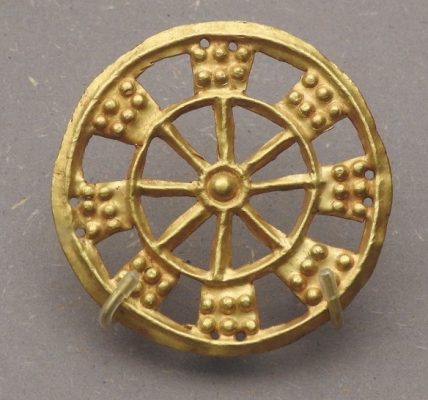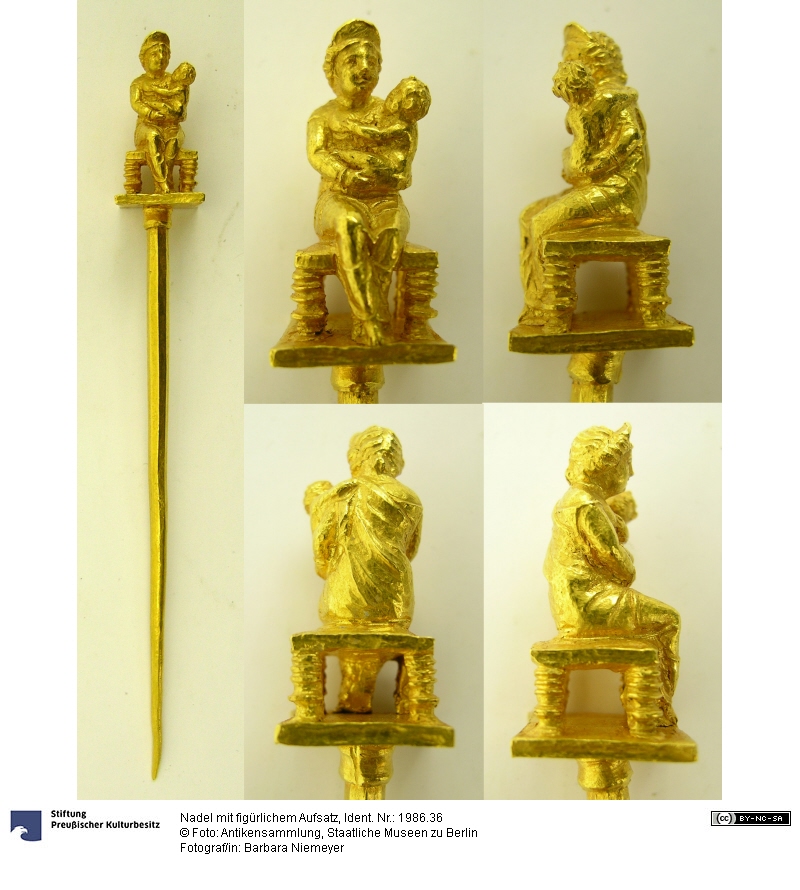“One tomb with two princesses was discovered in the village of Jubaji, located southeast of the city of Ramhormoz in the Khuzestan province of southwest Iran. The age of one is estimated to be 17 years old, the other will have been between 30 and 35 years old. (…)
Both were found lying on their sides in two bronze sarcophagi, roughly the shape of a bathtub. Given the large number of luxurious grave goods that the deceased had received on their journey to the afterlife, they must have belonged to the elite of the time. For that reason they are also called princesses. The contents of the tomb indicate a date in the 7th or 6th century BC. The grave goods mainly consisted of precious jewelery with precious stones and luxurious crockery. The majority of the objects are made of gold, such as the aforementioned bracelets. In addition, the tomb in Jubaji contained objects made of silver, bronze, iron, stone and ivory.
Both princesses probably belong to the family of the local neo-Elamite king Shutur-Nahhunte, son of Indada.” [V.T. van Vilsteren]
[V.T. van Vilsteren]

Golden brooch, diameter 7.6 cm; 585 – 539 BCE, Jubaji
Remains of a red paste or semi-precious stones can still be seen in the empty cells.


Photo source: https://www.magicstones.nl
- V.T. van Vilsteren and J. Nokandeh (eds), Iran: Bakermat van de Beschaving [Iran – cradle of civilization]. Catalogue of exhibition at Drents Museum, Assen 2018 https://www.academia.edu
- Pictures https://www.magicstones.nl/1773/0/photos/fotoreportage-iran-bakermat-van-de-beschaving
- https://www.perfectmanage.eu/userfiles/1773/files/Iran/Beschrijving-tentoonstelling-Iran.pdf












